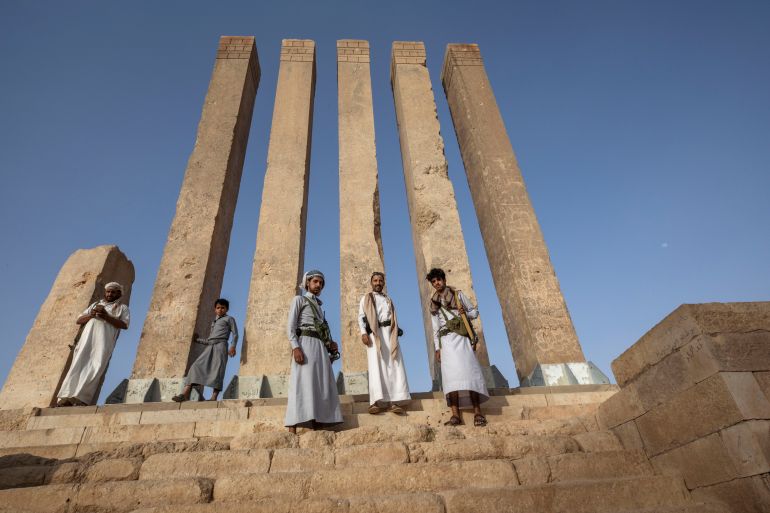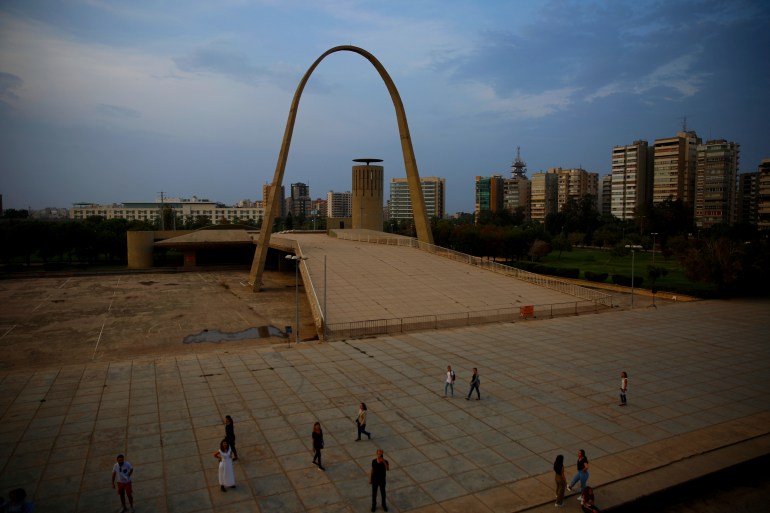Yemen and Lebanon landmarks added to UNESCO endangered list
Landmarks of ancient kingdom of Saba and the Rachid Karami International Fair in Tripoli have been inscribed to the list of sites in danger.

The landmarks of an ancient Yemeni kingdom and a modernist concrete fair park in Lebanon have been added to UNESCO’s List of World Heritage in Danger, in “an emergency procedure” aimed at better preserving the neglected sites.
In an extraordinary session on Wednesday, the UN cultural agency’s World Heritage Committee said on Wednesday it had decided to inscribe the seven significant landmarks of the Ancient Yemenite Kingdom of Saba and the Rachid Karami International Fair in Tripoli to provide access to “enhanced international assistance, both technical and financial”.
Keep reading
list of 3 itemsIn Tanzania, the Maasai fight eviction over state conservation plot
The Kyiv museum staff who stayed to protect cherished artefacts
The pre-Islamic Yemeni kingdom of Saba, which once stretched from Sanaa to Marib, now lies on one of the major front lines dividing Houthi rebels and Yemeni forces backed by a Saudi-led military coalition.
The threat of destruction from the ongoing war that began in 2014 was cited as the key reason to add the landmarks that include several ancient temples, a dam and the ruins of old Marib.
The seven archaeological sites bear witness to the complex centralised administration of the kingdom when it controlled much of the incense route across the Arabian Peninsula.
“The irrigation system of ancient Ma’rib reflects technological prowess in hydrological engineering and agriculture on a scale unparalleled in ancient South Arabia, resulting in the creation of the largest ancient man-made oasis,” UNESCO said.

Similarly, the World Heritage Committee used the emergency procedure to inscribe Lebanon’s Rachid Karami International Fair due to its “alarming state of conservation, the lack of financial resources for its maintenance, and the latent risk of development proposals that could affect the integrity of the complex”.
The fair was designed in 1962 by Brazilian architect Oscar Niemeyer on a 70-hectare (173-acre) site located between the historic centre of Tripoli and the al-Mina port.
Funding shortages continually interrupted construction before the half-built site was eventually abandoned following the outbreak of civil war in the mid-1970s.
“In terms of scale and wealth of formal expression, it is one of the major representative works of 20th century modern architecture in the Arab Near East,” UNESCO said.
Since 2019, Lebanon has been embroiled in an economic crisis, with the currency losing more than 90 percent of its value since then. The financial crisis has plunged three-quarters of the population into poverty, with millions struggling to cope with some of the world’s sharpest inflation.